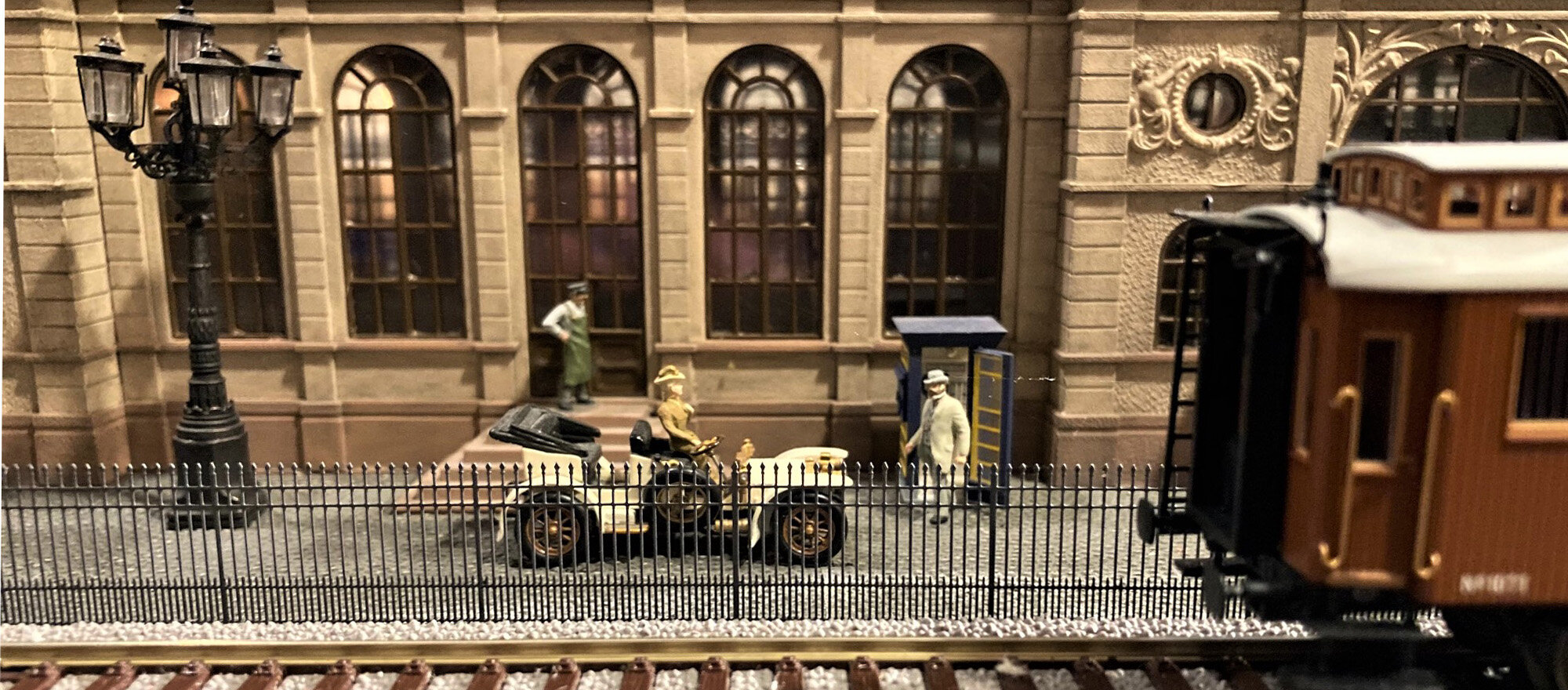
The Collection Overview
The Lessons of the Past - A Legacy for the Future
Conceived in 1979, The Sarajevo 1914 Collection is one of the most exceptional model railway collections in the world. While there are many layouts far larger than the one where The Collection operates, none teaches at the level The Collection does. None conveys as important a message.
The Collection is now in need of a permanent home where its unique qualities can be studied, enjoyed and appreciated by many types of visitors. There isn’t any other model railway collection that can be compared with it. Yet, if it were to be sold piecemeal it would lose its meaning, the reason it will be sold as a complete collection.
The unique purpose of The Collection has been to create detailed scenes of ordinary life that help to explain the complex causes of the First World War. These examples, in HO – 1/87th – scale, offer glimpses of the world that perished with the conflict that followed the assassination of the Austrian Archduke Franz Ferdinand von Habsburg-Este at Sarajevo on the 28th of June, 1914. That event haunts the twenty-first century as an incomprehensible tragedy that easily might have been avoided – a bitter lesson in humanity’s folly.
The Collection recalls parts of that world, still at peace, thirty-three days before the great conflict began. It highlights sectors of the European continent as they might have appeared on that early summer day. The buildings, the trains, the people – to the tiniest details – are all exclusively of that time and place.
More than 90 locomotives, all running well, more than 280 freight wagons and more than 210 passenger carriages and baggage vans comprise the “moving” parts of the collection. As a main point of interest, those 580-odd pieces visualize the least represented era of the model railway world – the period that ended when the First World War began.
A few pieces representing that period were produced each year from, approximately, 1978 until the present. The “golden age” however, occurred between the mid-1980s until, roughly, 2015. Since then, only a very few new models representing the pre-1914 period have been created by the European mass-market manufacturers. The Sarajevo 1914 Collection includes virtually all of the mass-market models representing the pre-First World War era that were produced during the period 1978-2021 plus a considerable number of hand-made, extremely detailed brass models seen as the pinnacle of excellence within the model railway category. The Collection also includes a number of outstanding models made by small artisanal operations and by Alec Nesbitt.
The creator of The Collection, Alec Nesbitt is both historian and miniature craftsman. Educated in Modern European History at Oxford University, he also holds the diploma from the Ruskin School of Fine Art at Oxford. Both specializations have been vital to the creation of The Collection.
The Collection’s non-moving parts – buildings, road and farm vehicles, people, animals and landscape – were painstakingly created and assembled, many to represent specific places, persons and incidents. Several elements of The Collection recall well-known locations and people who lived at the time. All of the models typify the European world of 1914.
This photograph shows Alec holding a 70-millimeter figure similar to the ones he produced at the request of King George the Sixth that were, upon his death, presented by the Queen to Prince Philip. The figures in “The Sarajevo 1914 Collection” are equally well detailed although they are only 18 millimeters high. Photo credit: Cyrus McCrimmon, The Denver Post (Photo By Cyrus McCrimmon/The Denver Post via Getty Images)
Read more about Royal commission: Alec Nesbitt’s miniature models brought lilt to king’s speech here.
The important unifying element – star of The Collection – is the “Orient-Express”, the renowned luxury train, as it travels through the layout from Paris to Vienna on its way to Constantinople, the train’s far away destination which, owing to lack of space, isn’t represented on the existing layout.
That legendary train passed daily through eastern France into Lorraine and Alsace, then crossed the Rhine into the southern states of the German Empire. Through its convincingly landscaped layout, the “Orient-Express” is hauled by immaculately detailed locomotives of each of the kingdoms, the empires and the lone republic through which it traveled; 1/87th scale models of the several machines that conveyed the actual train on the 28th of June in 1914. It passes and by-passes other trains along the way carrying local passengers to often unpronounceable destinations.
And there are trains hauling freight of every imaginable type: shoe polish, poultry, beer from all over Germany and Austria, giant steamship propellers, toys, milk, race horses, champagne, hay and explosives are a mere few of the categories represented. Kaiser Wilhelm the Second’s imperial train – his railway palace – is seen at Baden-Baden. In a square in the city of Stuttgart we find a small cluster of Jewish men, deep in discussion. Why they are there and what fate holds in store for them is another of the many historical aspects of The Collection. A large, sixteenth-century farmhouse with a roof that’s part thatch and part tile – a precise scale model of the real one in Wuerttemberg – commands a view over a slumbering pasture in that kingdom.
On the walls of the space where The Collection resides, densely arranged, hang the fascinating elements of the supporting collection: maps, portraits, posters, timetables, a 1914 railway ticket from Paris to Berlin, display cases housing much of the railway rolling stock along with numerous flags and coats-of-arms of the nations and personalities involved in the myriad intertwined stories. In bookcases and cabinets are hundreds of reference books in German and French and manufacturers’ catalogues that explain exactly what each piece of rolling stock in The Collection represents.
All of these reference sources together with the objects on the walls are part of The Collection and will accompany it when sold.









